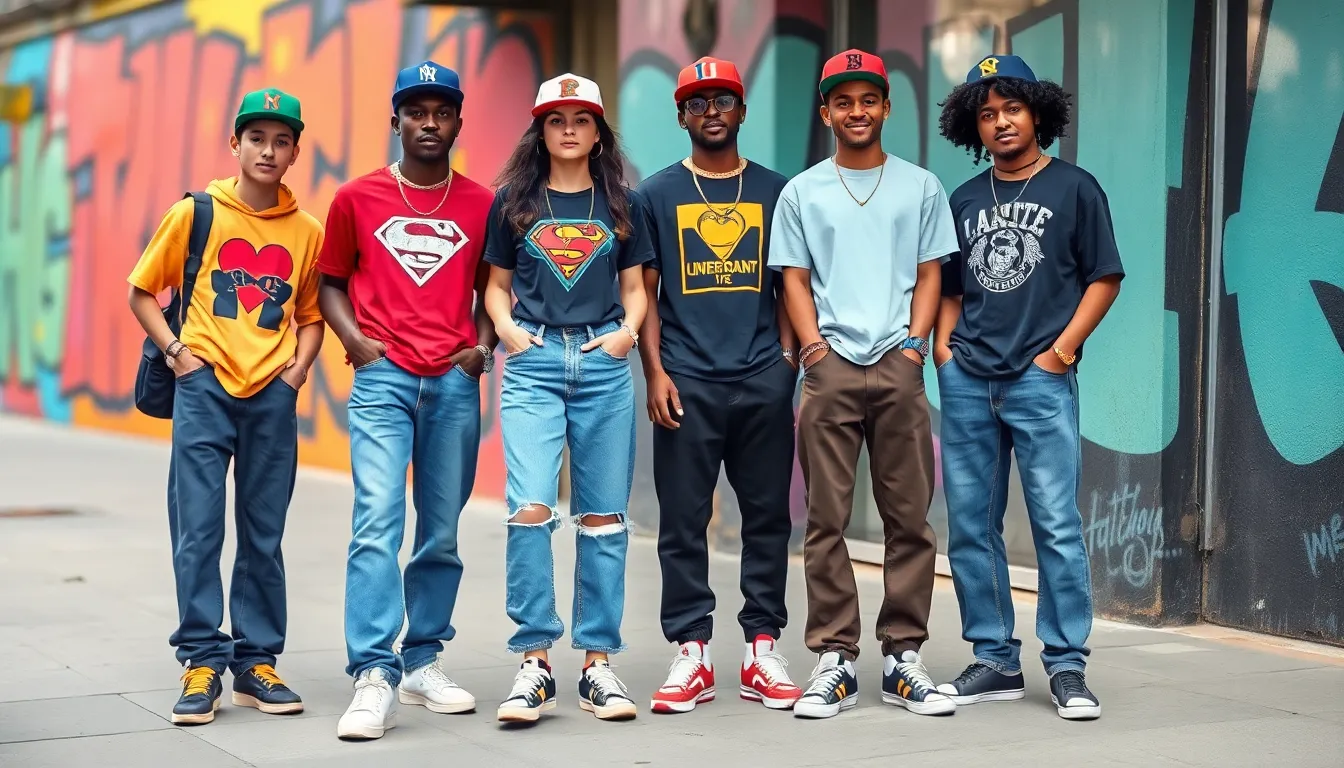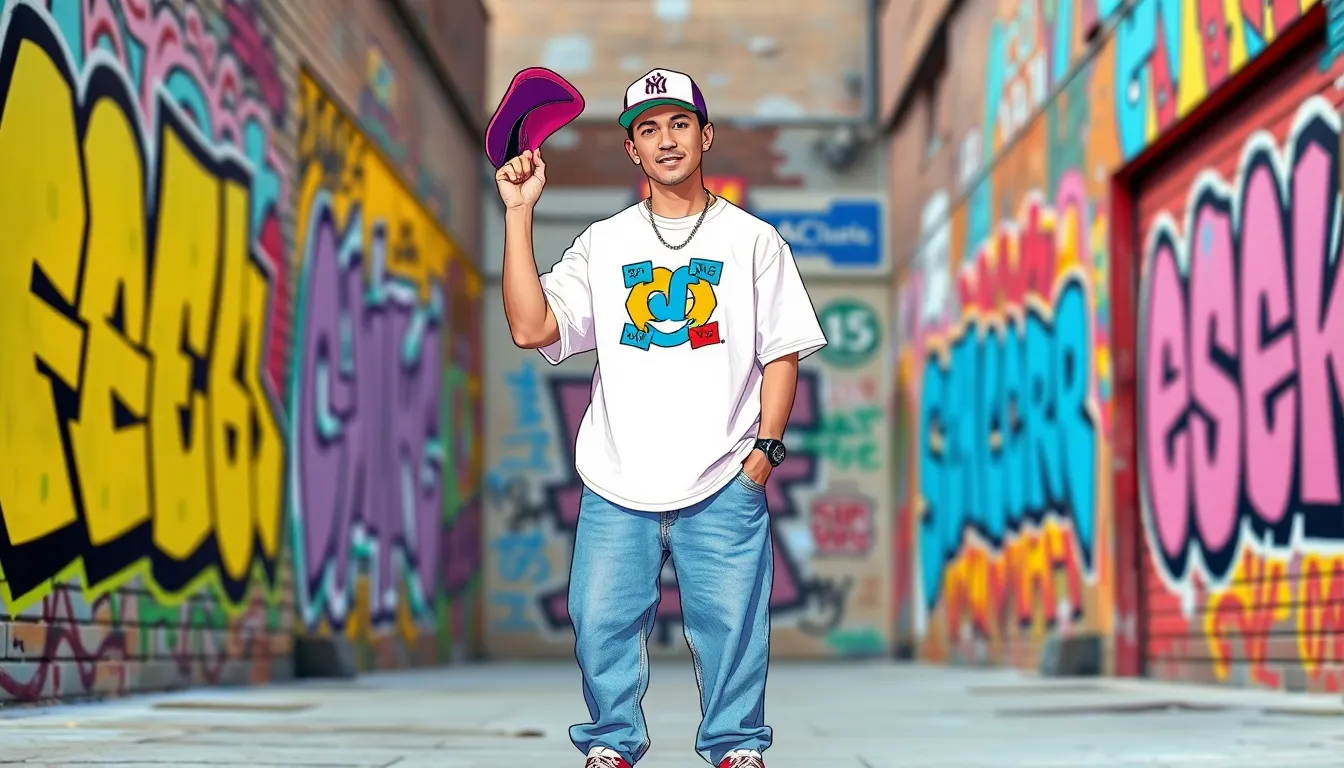Table of Contents
ToggleStep back in time to the 2000s, a decade where baggy jeans reigned supreme and graphic tees told stories louder than a rock concert. Streetwear wasn’t just a fashion choice; it was a cultural movement that transformed sidewalks into runways. From oversized hoodies to fresh kicks, this era blended comfort with attitude, making everyone feel like they could strut their stuff.
But it wasn’t just about looking cool. The 2000s streetwear scene was a melting pot of influences, from hip-hop to skate culture. It invited everyone to express their individuality while navigating the urban jungle. So grab your favorite pair of sneakers and get ready to dive into a world where style met rebellion, and every outfit was a statement waiting to be made. This journey through 2000s streetwear is bound to spark nostalgia and maybe even inspire a wardrobe revival.
Rise of 2000s Streetwear
The 2000s marked a pivotal shift in streetwear culture, blending comfort with edgy styles. This era saw the emergence of brands that defined the landscape.
Influential Brands
Many influential brands emerged during this time. Supreme gained notoriety with its iconic box logo and skate-centric designs, appealing to a diverse audience. Stüssy incorporated surf culture into streetwear, fostering a laid-back aesthetic. A Bathing Ape, known as BAPE, captivated fans with its bold camo prints and playful designs. Additionally, brands like Rocawear and FUBU celebrated urban culture with their distinctive graphics and stylish cuts, solidifying their place in the fashion hierarchy.
Key Collaborations
Collaborations played a crucial role in shaping the 2000s streetwear scene. Nike partnered with various designers and artists, resulting in limited-edition sneakers that became highly sought after. Adidas collaborated with influential figures like Pharrell Williams and Kanye West, producing exclusive footwear that transcended typical athletic gear. Other notable partnerships included the collaboration between Comme des Garçons and Nike, highlighting innovation through unique silhouettes. Each collaboration not only elevated brand recognition but also defined trends, leaving a lasting mark on streetwear culture.
Style Elements of 2000s Streetwear

2000s streetwear featured distinctive style elements that shaped urban fashion trends. This era balanced comfort with bold expression.
Baggy Fits and Layering
Baggy fits dominated the 2000s, creating a laid-back aesthetic. It emphasized oversized jeans, loose-fitting tees, and hoodies. Layering became essential, as individuals often wore multiple pieces for added style. Popular combinations included graphic tees over long-sleeved shirts or hoodies paired with jackets. This relaxed silhouette offered both comfort and freedom of movement. Many embraced the trend by mixing various textures and colors, showcasing personal flair. The influence of hip-hop icons propelled these styles into the mainstream, leading to a widespread adoption across diverse demographics.
Iconic Accessories
Accessories defined 2000s streetwear, adding unique flair to outfits. Sneakers stood out as essential items, with brands like Nike and Adidas releasing iconic models. Snapback caps also rose in popularity, providing a stylish way to complete looks. Oversized sunglasses became a signature element, enhancing the attitude of streetwear culture. Statement belts often featured bold logos and designs, further emphasizing individuality. It was common to see layered jewelry, such as chunky chains and friendship bracelets, which added a personal touch. Collectively, these accessories not only complemented outfits but also signified the wearer’s affiliation with specific subcultures.
Cultural Impact of 2000s Streetwear
2000s streetwear significantly influenced various facets of culture, intertwining fashion with music, art, and everyday life.
Influence on Music and Art
Music genres, especially hip-hop, directly shaped streetwear, making it a vital part of the scene. Artists like Jay-Z and Lil Wayne popularized branded items, turning their looks into cultural symbols. The art world also embraced streetwear, with graffiti and urban art finding a place in fashion designs. Iconic album covers matched street style, showcasing vibrant graphics and bold statements. Designers often collaborated with musicians, such as Pharrell Williams, creating limited-edition pieces that drove trends. Such partnerships elevated streetwear, positioning it as a canvas for cultural expression and innovation.
Mainstream Adoption
Mainstream fashion embraced streetwear, transforming its niche appeal into widespread popularity. Major retailers began incorporating streetwear elements into their collections, reflecting the era’s laid-back aesthetic. High-fashion houses took notice, often merging street styles with luxury, like Gucci’s collaborations. Celebrities endorsed these looks, further pushing streetwear into the global spotlight. The rise of social media amplified this trend, allowing brands to reach larger audiences. Fashion weeks began featuring streetwear-inspired designs, solidifying its presence in contemporary fashion landscapes.
Notable Trends Revisited
2000s streetwear saw the rise of distinct trends that shaped the fashion landscape. The impact of these trends remains evident today, reflecting a blend of cultural influences and individual expression.
Logo Mania
Logo-centric clothing defined the era. Brands prominently displayed their logos on t-shirts, hoodies, and hats, creating a sense of identity among wearers. Recognition of brands like Supreme, A Bathing Ape, and FUBU became essential for expressing personal style. Streetwear enthusiasts sought out designs that showcased bold graphics and loud branding. This fixation on logos turned clothing into walking advertisements, making status symbols out of everyday pieces. The prevalence of well-placed logos underscored a connection to the fashion community, inviting conversations centered around brand allegiance.
Hip-Hop Influence
Hip-hop culture heavily influenced 2000s streetwear. Artists like Jay-Z and Lil Wayne set trends with their styles, becoming icons for fans. Their fashion choices blended high-end pieces with more accessible streetwear, creating a new standard. Baggy jeans and oversized tees became staples, reflecting the relaxed vibe of the music genre. Sneakers also gained prominence, particularly collaborations with brands that resonated with hip-hop culture. The connection between streetwear and hip-hop not only shaped individual styles but also fueled a movement that celebrated creativity and authenticity. This dynamic relationship continues to impact modern streetwear designs and trends.
The 2000s streetwear scene remains a powerful influence in today’s fashion landscape. Its blend of comfort and bold expression created a unique identity that resonated with diverse audiences. As modern trends continue to evolve, the essence of this era offers a rich source of inspiration.
The cultural connections forged through music and art during this time still echo in contemporary styles. By revisiting the iconic elements of 2000s streetwear, individuals can not only celebrate a vibrant past but also infuse their wardrobes with a sense of authenticity and individuality. Embracing this nostalgia may lead to a fresh take on personal style that honors the roots of streetwear culture.






